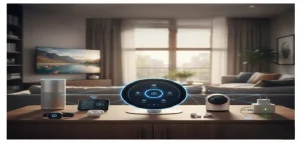
If you’ve ever wondered what smart home devices are and whether they’re worth it, let me walk you through my experience. I’ll keep it simple, straight to the point, and share a few funny missteps along the way.
Here’s a quick look at what you’ll get from this guide:
What these gadgets actually are
How they work in everyday life
The main categories (lighting, security, appliances, and more)
The pros and the not-so-glamorous cons
How I use them in my daily routine
Practical tips for choosing the right ones
Common mistakes to avoid
A few FAQs answered without the tech jargon
So, What Are Smart Home Devices Really?
In plain English, smart home devices are everyday objects with a bit of digital brainpower. They connect to Wi-Fi or Bluetooth and let me control them with my phone, voice, or sometimes even by sensing my habits. Think of a light bulb that dims itself when I’m winding down, or a lock that tells me if the door’s open when I’m already in bed.
The beauty is in how ordinary they seem until you realize they’re doing tasks automatically. My lights, for example, follow a schedule better than I do.
I’ve written before about more specific tools like smart thermostats and the idea is the same across the board: they’re here to save me time, add convenience, and, in some cases, even save money.
How Do They Actually Work?
Most devices talk to my phone through Wi-Fi, some prefer Bluetooth, and others join in with hubs like Alexa or Google Home. The process is simple: I give a command, the gadget follows. Sometimes it’s instant, sometimes it’s like waiting for my teenager to do chores—but that’s the charm of smart home technology.
The smartest part isn’t just the connection—it’s automation. I can set routines, like having the lights turn on at sunset, or my coffee machine start brewing before I even crawl out of bed. And yes, it feels a bit like living in the future… assuming the future still includes waiting for the Wi-Fi to reconnect.
The Main Types I Use as Smart Home Devices (And You Might Too)
Smart Lighting

This was my entry point. Smart bulbs and switches let me set moods, schedules, and brightness with a tap or a voice command. I love telling my living room to “relax” and watching the lights adjust instantly. It’s both practical and a little dramatic.
Smart Security Devices
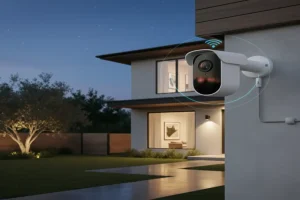
I sleep better knowing my doors lock themselves if I forget. Smart locks, cameras, and alarms keep me updated when I’m away. My favorite part? Checking my phone to see who’s at the door without leaving the couch. I’ve written a more detailed review of smart locks, and trust me, they’ve been worth it.
Smart Thermostats
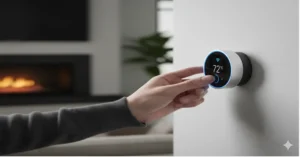
This one was a game changer for my bills. I can adjust the temperature from work, or let it “learn” my habits. The first month I used mine, the savings spoke louder than the gadget itself.
Smart Appliances
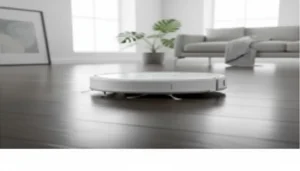
From fridges that ping me if I leave the door open, to a robot vacuum that knows my floors better than I do, appliances are getting clever. My vacuum, for example, has mapped out the living room like a seasoned explorer.
Entertainment Gadgets
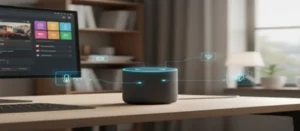
mart speakers and TVs are the fun side of things. Music in every room, voice-controlled shows, and instant news updates. My smart speaker even doubles as a trivia partner—although it usually beats me.
Why I Chose Them (Pros That Matter)
For me, the best part is convenience. Turning off lights without leaving bed, adjusting the heat from my phone, or checking security cameras while traveling—it saves time and mental effort.
They also make my home feel safer. A lock that alerts me if it’s left open gives peace of mind. And on top of that, some devices help with energy savings, like my thermostat and lighting.
Accessibility is another bonus. I’ve seen how helpful they are for my parents, who appreciate being able to control things with simple commands instead of fiddling with switches.
Downsides Nobody Tells You
Of course, it’s not all smooth sailing. First, there’s the cost. Buying several gadgets at once adds up quickly.
Then there’s privacy. Some people worry about their devices “listening.” Personally, I’m more worried about the number of times Alexa has misunderstood me when I just wanted the kitchen light on.
And yes, the tech itself isn’t perfect. Updates can break things, Wi-Fi dropouts ruin routines, and sometimes my smart speaker insists I asked it to play music when I didn’t.
How I Decided Which Devices to Buy
My rule was to start small. I picked one device (a smart bulb) before investing in more. Once I was comfortable, I expanded to locks, thermostats, and speakers.
I also checked compatibility. Some devices love Alexa, others prefer Google Assistant, and a few are Apple loyalists. Mixing them isn’t always easy.
Budget was another factor. I didn’t buy the fanciest gadgets, but I looked for ones with good reviews and reliable support. For more suggestions, check out my guide on best smart home devices.
Common Mistakes People Make (That I Did Too)
Buying too many gadgets too quickly. I did this with bulbs and ended up with a drawer full of spares I didn’t need.
Ignoring security settings. A weak password is like leaving the front door open.
Forgetting about compatibility. Not every device talks to every platform, and trust me, arguing with a stubborn device is no fun.
Additional Points
- Integration Across Devices
- How different smart devices can work together (for example, lights turning on when your security camera detects motion).
- Personal touch: “I love how my coffee maker starts brewing when my alarm goes off in the morning—it’s like my home knows me.”
- Voice Assistants Beyond Alexa & Google
- Mention Apple Siri, Samsung SmartThings, and other alternatives.
- Short anecdote: “Sometimes Siri surprises me with responses that even make me laugh.”
- Smart Gardening Devices
- Smart sprinklers, plant sensors, and garden lights.
- Personal touch: “I admit it—I sometimes check the soil moisture app just to feel like a plant whisperer.”
- Energy Monitoring & Sustainability
- Smart plugs and meters that track electricity usage.
- How they can help reduce carbon footprint.
- Fun observation: “Seeing exactly how much energy my gaming setup uses is… eye-opening.”
- Smart Home for Pet Owners
- Automatic feeders, pet cameras, and smart water fountains.
- Personal anecdote: “I can tell when my dog’s giving me the side-eye through the camera if I forget his dinner.”
- Home Health & Wellness Gadgets
- Air purifiers, smart sleep trackers, connected scales, or humidifiers.
- How they enhance comfort and well-being.
- Example: “My smart sleep tracker reminds me when it’s time to unwind—my phone won’t let me cheat.”
- Remote Troubleshooting & Support
- Some devices allow remote diagnostics or troubleshooting via apps.
- Personal angle: “Once my smart lock stopped responding, but the support app helped me fix it in minutes—no technician required.”
- Seasonal or Event-Based Automation
- Smart lights or decorations for holidays, birthday reminders, or mood lighting.
- Example: “Every Halloween, my lights flicker orange automatically—my kids think I hired a professional.”
- Privacy & Data Management Tips
- How to manage device permissions, app access, and cloud storage.
- Personal anecdote: “I had to reconfigure my camera cloud access once—it reminded me that even smart devices have boundaries.”
- Smart Home as a Long-Term Investment
- Devices that retain value or improve home resale appeal.
- Angle: “Potential buyers may see smart home features as a bonus—at least that’s what I hope!”
My Final Thoughts on Smart Home Devices
When I think about smart home devices, I see them as handy little assistants. They don’t solve every problem, but they make daily life smoother. I started small, had a few hiccups, but now I can’t imagine my home without them.
My advice? Begin with one or two devices you’ll actually use, like a smart bulb or thermostat. See how it fits your lifestyle. From there, expand slowly. Before long, you might find yourself enjoying the same small luxuries I do—like telling your living room to “relax” after a long day.
FAQs on Smart Home Devices
Do I need Wi-Fi for smart devices?
Most do. Some use Bluetooth, but Wi-Fi gives broader control and remote access.
Are smart devices safe from hackers?
Yes, if you keep software updated and use strong passwords.
Will they save me money?
They can. My smart thermostat alone made a noticeable dent in my bills.
Can I install them myself?
Many are DIY-friendly, like bulbs and speakers. Locks and thermostats may need more effort, but I’ve done most installations myself with a bit of patience.
Do they all work with Alexa or Google?
Not all, but most major brands do. I always check compatibility before buying.
